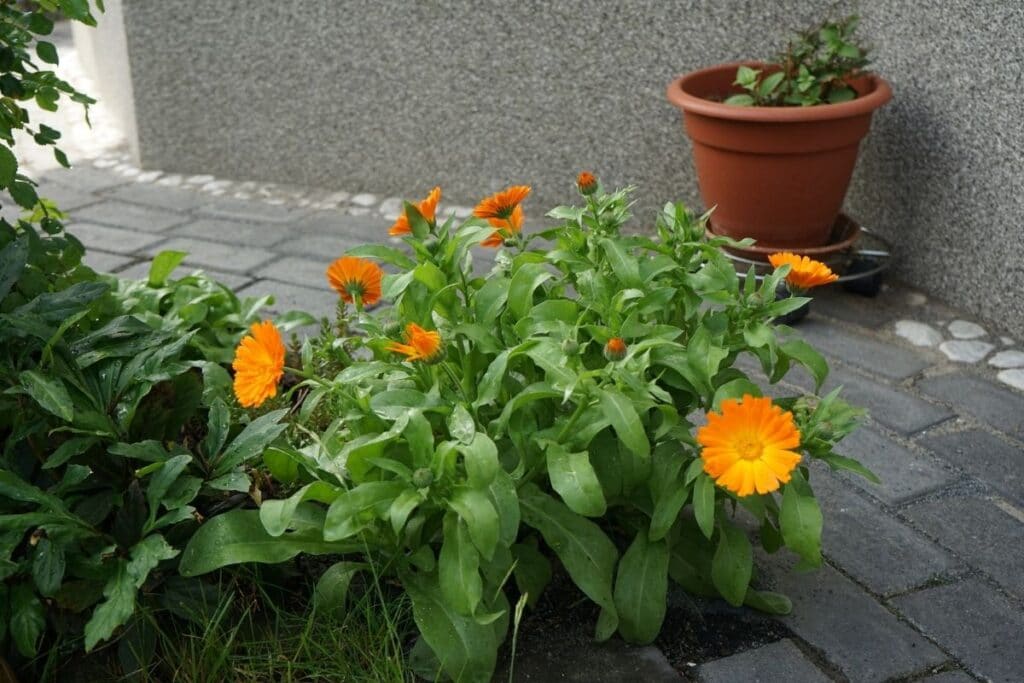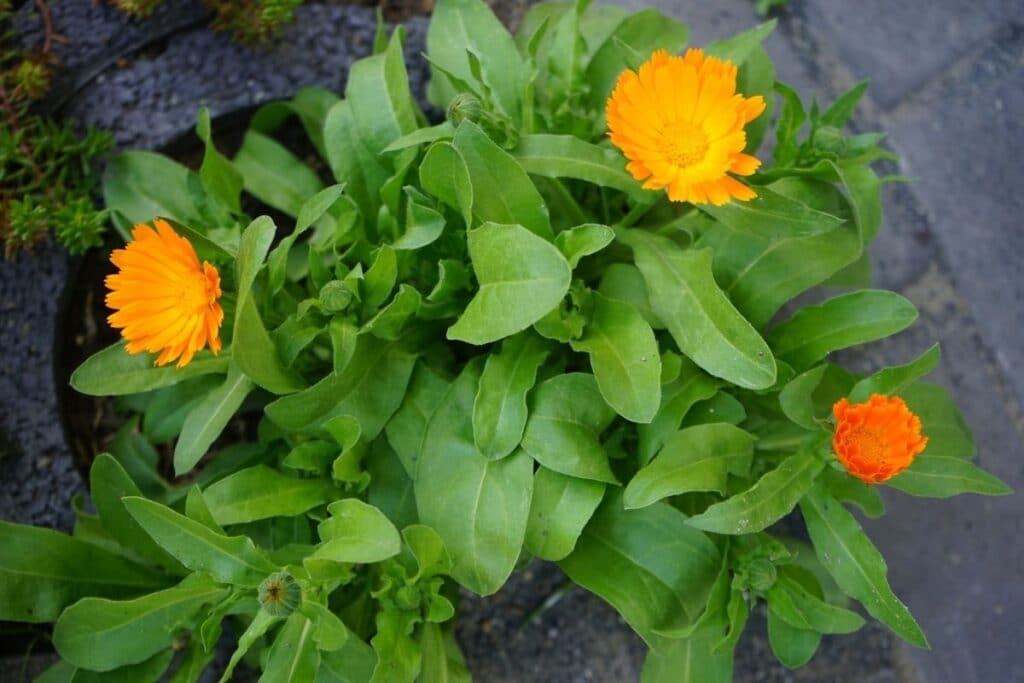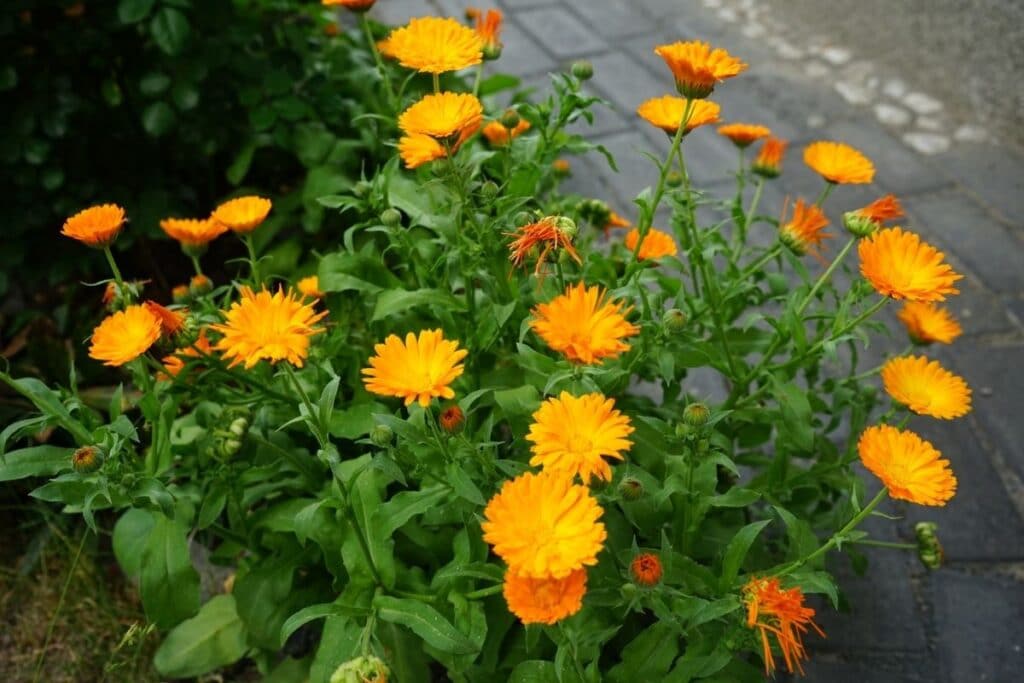Calendula, Calendula officinalis, is a beautiful flower that typically grows in many gardens. It’s such an easy plant to grow and it comes with many benefits. If you’re looking for a way to add beauty to your yard, gardening, or cooking then this article will be perfect for you!
These flowers are usually yellow or orange, but they come in many colors which makes them great for any use. They are also edible so if you want to cook with them then go ahead! Not only do they taste great but they have many health benefits as well, including fighting acne and inflammation, among other things.
Calendula is a beautiful flowering plant that can be grown in your garden or even inside on the windowsill. It’s easy to grow and it only requires about 10 inches of soil, not much water, and some sun. This article will teach you how to grow calendula.
What is Calendula?

The name “calendula” actually refers to a genus of roughly 15 to 20 species of perennial and annual plants in the Asteraceae family (often known as marigolds). Native to western Europe, southwestern Asia, Micronesia, and the Mediterranean, these flowers are referred to as pot marigolds, corn marigolds, desert marigolds, marsh marigolds, and more.
The name “calendula” is a Latin diminutive of the word “calendar,” which means “little calendar,” with the name “marigold” referring to the Virgin Mary. More often than not, the specific type of calendula that you will grow in your garden is Calendula officinalis, or the pot marigold.
Pot marigold is a medicinal flower that can be used to treat things like headaches, toothaches, and more. As a culinary herb, the calendula petals of this plant are edible and can be used fresh in salads or even dried to color cheese. It is often used as a substitute for saffron and can add vibrant color to everything from poultry dishes to soups and stews.
Not only that but Pot marigold is a powerful anti-inflammatory and wound treatment. It is often used to repel pests from the garden since its strong aroma tends to drive pests away from more desirable plants.
Growing Calendula Flower
Calendula flower is easy to grow and can be grown in most sunny locations and most types of soils. Although it is technically a perennial, it is grown as a manual in colder regions where winter survival is challenging and in hot climates where summertime is more of a challenge.
Many gardeners consider calendula to be the easiest and most versatile flowers they can grow. Because this plant can tolerate most types of soil as well as dry spells, it is a popular choice for seasonal color.
A longtime staple in British cottage gardens, calendula is easy to grow in the herb or flower garden. It is moderately frost tolerant and can add long-lasting beauty to either environment. It will readily reseed. Grown as an annual in most places, it is perennial in zones 9 to 11.
Plant your calendula flower in poor to average soil. It does not need to be overly fertile and in fact, soil that is too fertile can cause your plants to grow slowly or in a stunted fashion. Instead, grow in poor soil and water only occasionally – and make sure the organic potting soil is well-draining, too!
Calendula prefers somewhat cooler temperatures so filtered sunlight or a bit of shade is ideal. Full sun is best in cooler areas although a bit of afternoon shade is always appreciated.

How to Plant Calendula
Calendula is easy to grow either from seeds or transplants.
If planting calendula seedlings, wait until the danger of frost has passed before you transplant. If you’re growing from seed, you can sow them just before the last expected first date in your area.
You can also start your seeds indoors about six to eight weeks before the last frost date. Sow the calendula seeds thinly in a moist seed starter mix. You can use plant seeds that you collect from the calendula blooms and save them from season to season.
Again, calendula reseeds readily. Most plants will bloom within two months of seeding.

Caring for Calendula
Here are some tips to help you care for your pot marigold plants once seedlings are transplanted (or appear after sowing seeds).
Watering
Calendula likes to be a bit on the dryer side and will actually suffer from rotted roots in dense, wet soils. Therefore, it’s important that you only plant in well-draining soils (or in containers).
Water regularly until the plants are established. When your plants are mature, only occasional bouts of watering are necessary (and most of your plants’ watering needs will be supplied by regular rainfall).
Fertilizing
Calendula plant doesn’t need much in the way of feeding. In fact, infertile garden soil, calendula requires no supplemental feeding – fertilizing too much can actually lead to stunted growth or can cause your plans to become leggy and spindly.
The only calendula plants that require regular fertilizing, in fact, are those grown in containers or very marginal soils. Use a balanced water-soluble fertilizer calendula about once per month, since containers leach nutrients more quickly than regular garden soil.

Pests and Diseases
Calendula is prized for its hardy nature. Although no plant is truly resistant to all pests and diseases, calendula is one of the few that is largely free of problems. It can sometimes fall victim to powdery mildew, but you can keep this disease at bay by ensuring good air circulation and space between plants.
Keep the area around your plants free from debris and weeds, which will reduce the likelihood of snail and slug damage. Other pests to watch out for include whiteflies and aphids. You can spray with water to blast these pests off your plants or treat them with insecticidal soaps.
Otherwise, you shouldn’t have to worry about too many diseases and pests affecting your plants!
Harvesting Calendula
If you choose to harvest your calendula flowers, whether for ornamentation in a vase or for culinary or medicinal use, do so late in the morning. Wait until the dew has dried but not so long that the sun has become hot and desiccating.
You can pick flowers when they are fully open. To dry them, spread the cut heads on a screen in a shady, dry environment. Turn the calendula blossoms until they are dry, papery, and brittle, then store them in glass jars until you are ready to use them.
Deadheading and Pruning Calendula Flowers
When deadheaded regularly, calendula can bloom continuously from spring until fall – and beyond! In warmer environments, however, your calendula may briefly pause its blooming in order to gain a respite from the summer heat. However, as soon as the temperatures cool in the fall, the blooming will return.
You don’t need to prune your calendula plants, but regular pinching can prevent stalks from becoming too tall and spindly.
If you’re looking for a beautiful flower that is easy to grow and care for, calendula might be your best bet. With its large range of colors, it can add brightness to any vegetable garden or porch planter in need of a pop of color.
From planting tips to how often the flowers should be watered, we have covered all the basics here for you.

Common Types and Varieties of Calendula
Calendulas are so easy to grow that there are multiple cultivars available for you to choose from. Regardless of which of the more than 100 different types of calendula you choose to grow in your garden, you’ll find that all add a pop of bright color from late spring until early fall.
Here are some of the most commonly grown types of calendula plants.
Radio Extra
Radio Extra is one of the most bizarre types of calendula to behold, but it’s definitely worth growing in your garden! This plant grows quite tall and produces cactus-like blossoms of bright orange.
Touch of Red
Touch of Red is a calendula variety that can be either red or orange, but all flowers have red-tipped petals and deep red bellies.
Pink Surprise
Pink Surprise is a bit of a misnomer for this calendula cultivar since its flowers are actually gold and yellow. However, some do have pink edges and there are some types of Pink Surprise calendula that are truly pink with golden highlights, too.
Greenheart Orange
Greenheart Orange is a unique type of calendula that has flowers with orange petals around lime-green centers. It’s quite different from other kinds of calendula and is best grown alongside these other varieties for a truly stunning display of all the colors in the rainbow!
Bronzed Beauty
As the name implies, Bronzed Beauty is the perfect calendula variety for summer. It produces coppery peach and cream-colored flowers atop tall stems. You’ll want summer to never end!
Tangerine Cream
Tangerine Cream produces bicolor double blooms in colors like cream and orange – these plants are reminiscent of your favorite Creamsicle treat!
Citrus Cocktail
Citrus Cocktail is a great variety to consider if you’re short on time and space. This easy-to-care-for flower produces orange and yellow flowers and produces miniature, compact plants that are ideal for containers.
Dwarf Gem
Another compact plant, Dwarf Gum reduces double blooms in shades like yellow, apricot, and orange.
Sherbet Fizz
Sherbet Fizz is one of the most unique varieties you can grow, producing buff-colored flowers with red-tipped petals and underbellies.
Fruit Twist
Fruit Twist is a variety that produces single, semi-double, and double flowers in bright yellow and orange shades. It’s sure to add a twist to your flower garden!
Golden Princess
Golden princess is a variety that has bright blooms and dark centers. The contrast makes it perfect at drawing your visitors’ eyes to your flower beds!
Bonbon
This fun-loving variety blooms early in the season, earlier than most other varieties, in fact. It is a dwarf plant that is perfect for a container.
Prince
Prince is an excellent heat-tolerant variety. It is a tall variety, so not well-suited to space-constrained environments, but produces lovely yellow and orange flowers.
Kablouna
Kablouna is another yellow and orange variety to grow. It produces flowers with tufted centers, making a unique focal point in your garden. Another benefit of Kablouna is that it is one of the best at resisting mildew and similar fungal diseases.
Flashback
Flashback offers gardeners a stunning blend of tricolor and bicolor flowers, with represented shades including apricot, cream, yellow, and peach.
Pacific Beauty
If you’re looking for a heat-tolerant variety, Pacific Beauty is one of the best options to consider. It produces tall, sturdy stems with yellow and orange flowers.
Calypso
Last but not least, Calypso is another calendula variety to consider growing. It produces double blooms on dense, compact plants, making it a good choice for a container or another environment where space is at a premium. It typically produces yellow and orange flowers with dark centers.
FAQs
How do you keep calendula blooming?
To keep calendula blooming, deadhead spent flowers regularly to encourage continuous blooming. Ensure they receive sufficient sunlight, adequate water, and well drained soil rich in organic matter.
How long do calendula flowers last?
Calendula flowers typically last for several weeks to a couple of months, depending on growing conditions and care. Regular deadheading can prolong the blooming period.
Does calendula like sun or shade?
Yes, Calendula thrives in full sun to partial shade, preferring at least 6 hours of sunlight daily for optimal growth and flowering.
Why is my calendula dying?
Calendula may wilt or die due to various reasons, including overwatering, underwatering, poor drainage, pests, diseases, or environmental stressors like extreme heat or cold. Assess the growing conditions and address any issues promptly to revive the plant.
Is calendula easy to grow?
Yes, Calendula is generally considered easy to grow, making it popular among gardeners. It tolerates a wide range of soil conditions, is relatively pest-resistant, and blooms prolifically with minimal care.
Conclusion
Hopefully, this article has convinced you that growing calendula plant is a great choice and given you all of the knowledge you need to help make growing these stunning flowers even more enjoyable! Calendula’s vibrant blooms and easy care make it a wonderful companion plant for any garden.
*image by cristaldream/depositphotos






